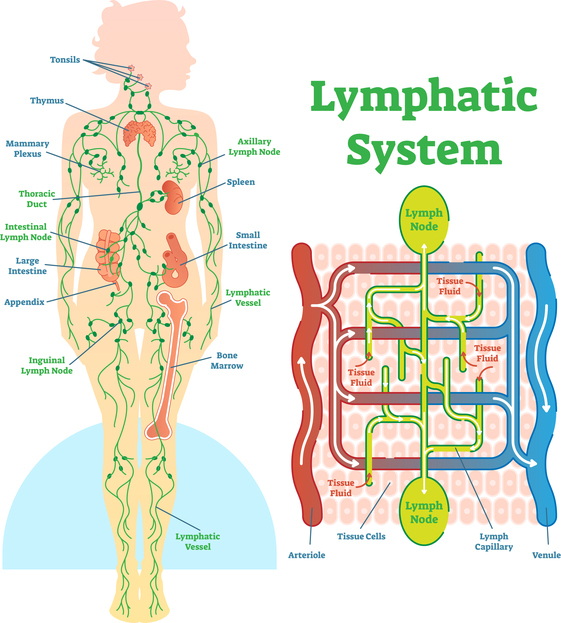 There are approximately 700 lymph nodes found in the human body, with the majority of them being in the armpit, neck, and groin areas. The back of your head, referred to as the occipital region, is where several lymph nodes reside to serve their function.
There are approximately 700 lymph nodes found in the human body, with the majority of them being in the armpit, neck, and groin areas. The back of your head, referred to as the occipital region, is where several lymph nodes reside to serve their function.
Lymph nodes are connected to each other within the body. This allows them to work together to fight infections. The interesting part is that they are located in different areas. Some can be found just under the skin. Others are located deep within your body. No matter where they are, though, it’s nearly impossible to notice them unless they have swelled up.
Lymph node inflammation is often tender to the touch and feels raised.
If you have an issue with a specific area, the lymph nodes in that region may increase in size. Some of the most commonly noticeable areas are behind the ear or on the neck.
Because they can be swollen around different places, it can mean different things.
Here are some examples:
Swollen lymph nodes around the neck are the most common. They can also affect the jaw. These can usually be caused by several things. Typical conditions include tooth infections or viruses. Throat infections or respiratory problems are also common.
Lymph nodes under the arm can become swollen due to trauma. They are also often associated with different types of cancer. This includes breast cancer. They should be examined right away.
Swollen lymph nodes around the groin could mean a few different things. It isn’t uncommon among young people. But, in some cases, they can be linked to STDs or infections of the feet.
Another common area is swollen lymph nodes behind the ear. This can be caused by a few different things. It may be related to an eye infection. Most commonly, though, it is a scalp or skin problem. They usually relate to scalp conditions, like seborrheic dermatitis. Other skin conditions may also play a part. But, like any other type of infection, these conditions can act as a trigger.
The occipital lymph nodes, as well as all lymph nodes found in the body, filter out impurities and harmful substances from the body. Direct infection such as dandruff, lice, or ring worm may lead to swollen occipital lymph nodes.

Seborrheic Dermatitis - What You Should Know
If you do have swelling behind the ear, you may have seborrheic dermatitis. It’s a chronic skin condition. It causes the skin of the scalp to become inflamed. This can cause symptoms like itching, flaking, and scaly patches.
It’s an incurable infection. But, most people can treat ...
...and manage it easily. Technically, it isn’t dandruff. But, it can confuse people because it can result in white flakes. Dandruff is an overproduction of skin that causes it to flake. Seborrheic dermatitis is an infection/condition that must be treated and managed to keep it under control.
Other common skin conditions of the scalp are psoriasis and eczema. Any type of infection like these can trigger a reaction. While it’s important to check on other possibilities, these causes are most common in that particular area.
Should I See a Doctor for Swollen Lymph Nodes?
You should always see a doctor if they’re swollen. They will be better able to determine the cause. In most cases, though, you’ll be able to treat the condition on your own. Some might become smaller on their own. Others will need an antibiotic treatment or regular monitoring.








